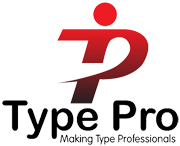Angelina Bennet, Co-Founder of Type Pro and Director of iPotential Ltd, has published a series of articles on Personality Type and Conflict.

Observing current world events, Angelina notices interpersonal conflict and she hypothesises about what might be going on for the people involved.
Although the causes of conflict and the ways in which we engage in conflict can be complicated, there are several aspects of our Psychological Type that can create tension, misunderstanding, hostility or different reactions to conflict.
The articles, which are available to read at ipotential.co.uk, explore seven perspectives on conflict viewed through Psychological Type.
Perspective 1 – Different Perceptions of Conflict
Whenever a client or friend mentions a conflict issue, my first ‘go-to place’ is the Thinking-Feeling dichotomy (the Judging Functions). One of the questions I often ask when helping people to identify whether their preference is for Thinking or Feeling is, “When does a discussion between people start to become a conflict?”
In many situations where there is some ill-feeling, there is not an actual conflict at all. However, we may perceive a situation as hostile, or inadvertently create tension, because of our different perspectives and approaches.
Read the full article at ipotential.co.uk.
Perspective 2 – Conflict Between Each Preference
Across three separate articles, Angelina looks at the potential for conflict between opposing Types. Again, the overall message is that there is often no malevolence intended, just a misunderstanding of the motives and needs of the other. With an understanding of what is behind a person’s behaviour, we are less likely to perceive them as irritating. We may still find their behaviour or reactions irritating; however, we are less likely to pin our irritation on them as a person.
Read the article on Extraversion and Introversion at ipotential.co.uk.
The next article is on Judging and Perceiving.
The last article on perspective 2 is about Sensing/Intuition and Thinking/Feeling.
Perspective 3 – Conflict From Our Opposing Function
It can be easy to assume that those with the same functions in their Types will see eye to eye. For example, “I’m a T and you are a T, so we should be similar in some ways”. Not if one is TJ and the other is TP.
There will be some similarities, but there will also be some stark differences that can create conflict. This is because the TJ will Extravert their Thinking (use thinking outwardly in action and communication) and the TP will Introvert their Thinking (use thinking internally in thoughts and problem solving).
The article provides an illustration showing the positive characteristics of each function-attitude (the function paired with E or I) and how they may perceive the opposing function negatively under certain circumstances.
Read the full article at ipotential.co.uk.
Perspective 4 – Conflict From Our Inferior Function
The Inferior Function is the absolute opposite to our dominant or leading Function, and therefore the opposite to how we see ourselves. As such, we have a complicated relationship with our Inferior Function. It plays many different roles in our lives, including how we choose to relax, how we balance ourselves, and how we unconsciously protect ourselves from damage when excessively stressed. For the purposes of this article, Angelina focuses on the potential for conflict and irritation.
Read the full article at ipotential.co.uk.
Perspective 5 – Conflict Between Same Types
In this article, Angelina dispels the idea that just because we are the same Type as someone else, we will automatically get on well with each other. Sometimes this is true; however, being the same (or similar) Type as someone else can lend itself to a potential cause of conflict known as Projection.
Read the full article at ipotential.co.uk.
Perspective 6 – Conflict as a Result of Our Stage of Personal Development
Looking at where we are in our personal development, combined with our Personality Type, gives a richer picture of how we are likely to relate to others, deal with problems and view the world.
All Types can operate at all developmental stages, and our effectiveness and flexibility in the use of our Type will be different at different stages. At the earlier stages we may be very ‘full on’ in showing our Type, whilst at later stages we may be more balanced and use more of the positive qualities of our Type.
Read the full article at ipotential.co.uk.
Perspective 7 – How Different Types May Try to Resolve Conflict
In this final article, Angelina describes how different Types may attempt to resolve a conflict situation, and how the different approaches that we have due to our Types can make the conflict worse if we get it wrong.
When different Types are involved, not only do we have different approaches to resolving the conflict to deal with, but there will also be either Opposing Function issues to deal with (see article 3) or Inferior Function issues (see article 4).
In their book Introduction to Type and Conflict, Damian Killen and Danica Murphy suggest a process for conflict resolution that takes into account all four styles. In brief, they recommend creating space for discussion, hearing all views, and understanding the value of both the Thinking and Feeling perspectives, before moving towards finding a resolution.


Jamesunend
Superb website you’ve gotten right here.